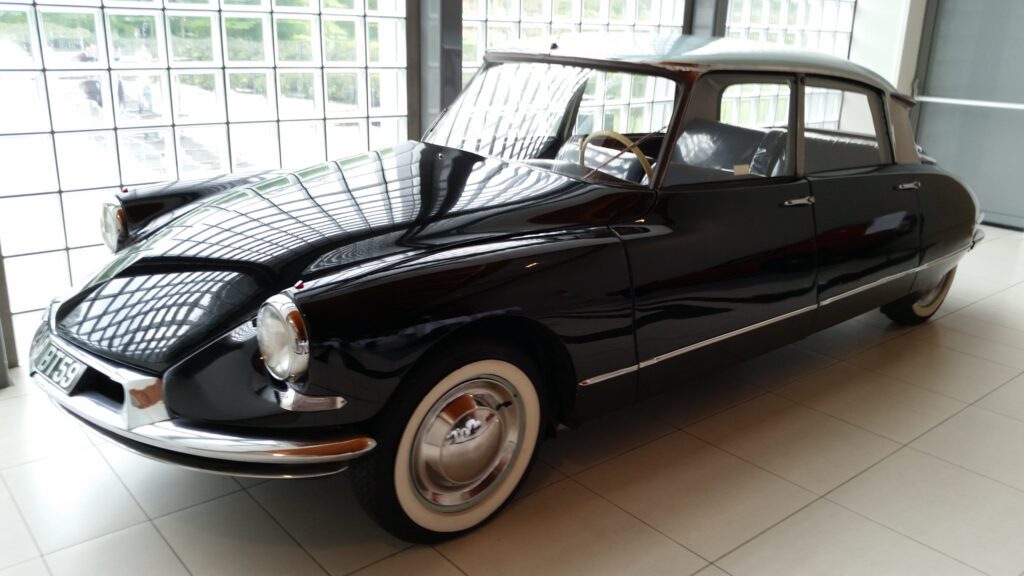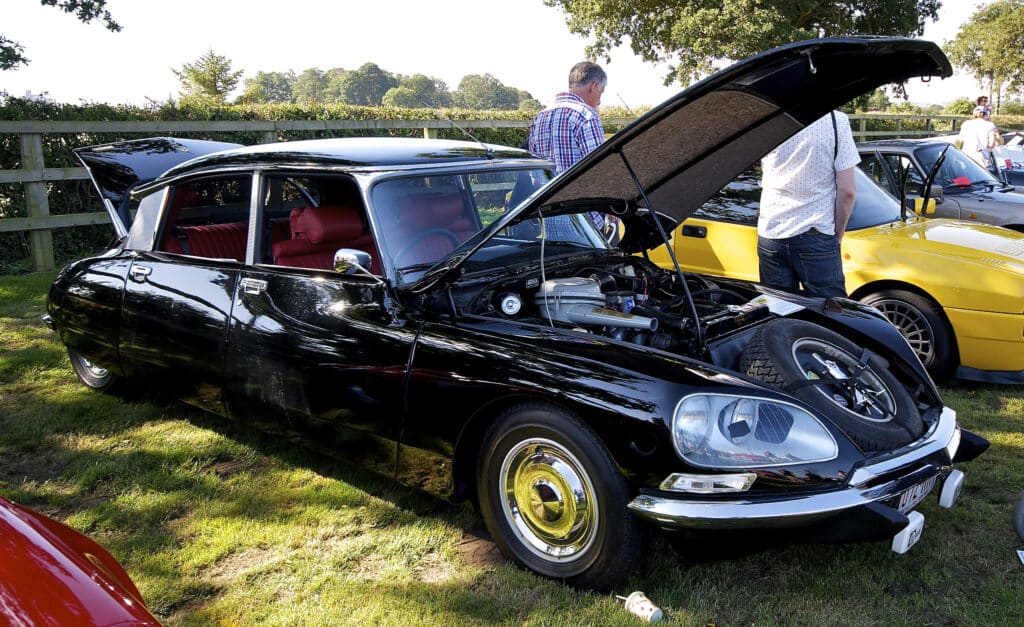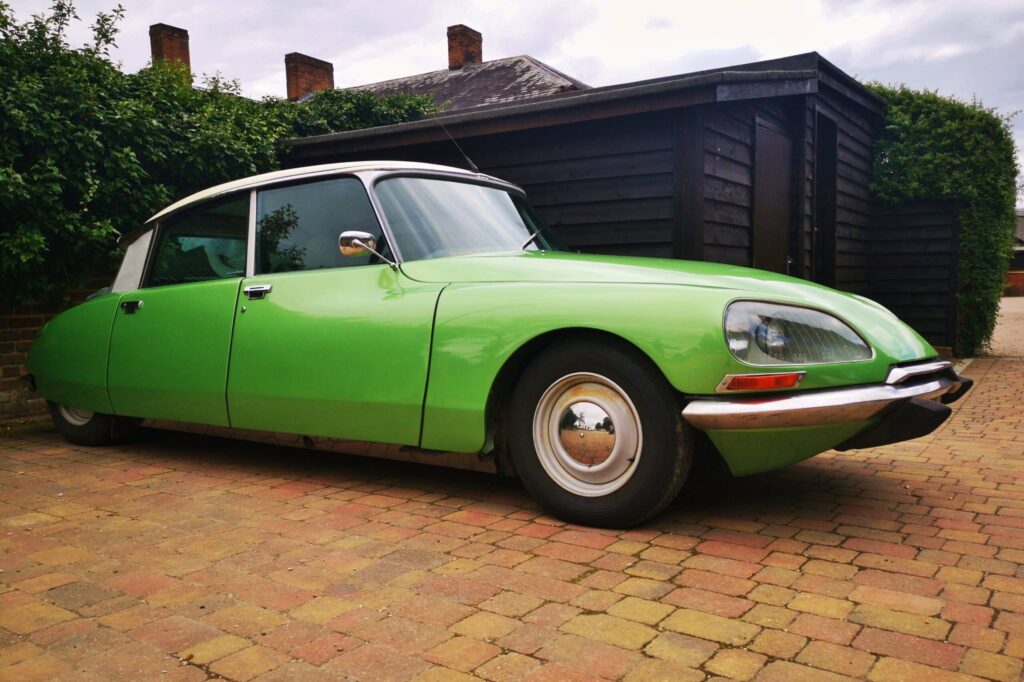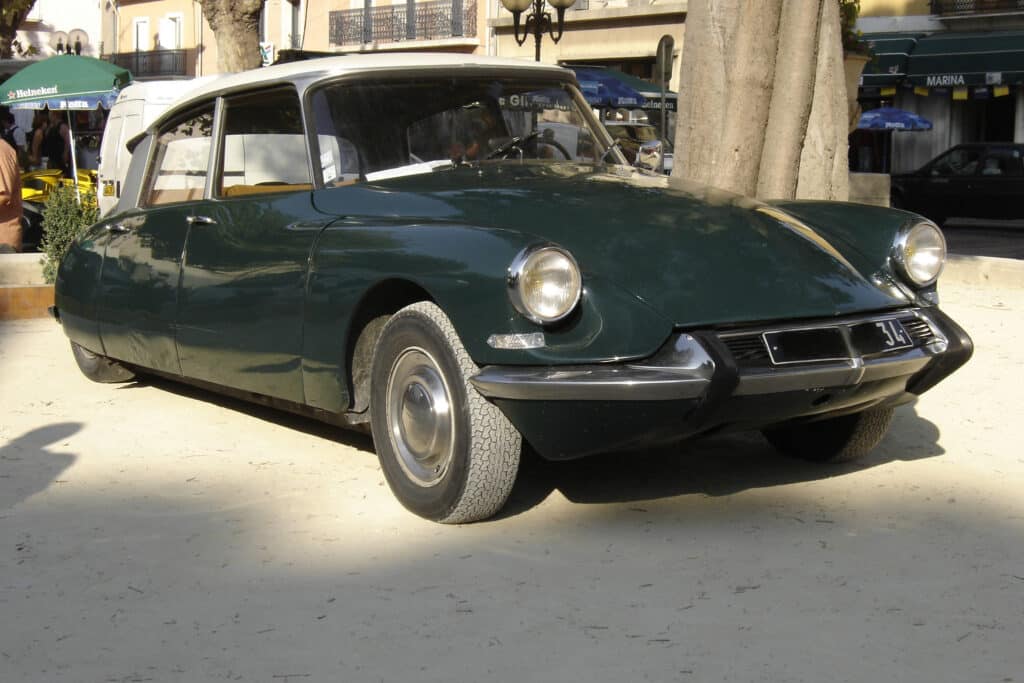The cars as we know them today resulted from decades of improvements and rethinks. With every new model, car makers have introduced something different and, hopefully, better. Some of these upgrades have caught on, while others haven’t been successful. But every now and then, car makers have come up with engineering or design innovations that shook the industry to the bone. For instance, Audi was the first to use four-wheel drive in a passenger car, while the Mercedes-Benz gave the world fuel-injected engines. All around the world, motorists are much safer thanks to Volvo and their seat belts. And Mini Morris showed everybody how practical and spacious can a small car be. But all these accomplishments, impressive as they may be, are overshadowed by one car – the legendary Citroen DS.
The story of Citroen DS
Citroen has been one of the pioneers of the automotive industry, always bringing something new into the game. Besides being different, their cars are usually radical and sometimes even game-changing. A good example is their Traction Avant, a luxury limousine from the early 30s. While others were still using steel ladder frames and live axles, this one had a monocoque chassis and an independent suspension in the front. But the most significant difference was the drivetrain, as this Citroen had a front-wheel drive. Sure, some other manufacturers before it had already been exploring this idea. But due to the technical challenges of this configuration, they hadn’t succeeded in making a well-balanced car. With its independent suspension and other mechanical teaks, Citroen managed to overcome these obstacles. The result was the first vehicle with a front-wheel drive that would be mass-produced. In fact, they were so sure of their new car that they called it Traction Avant, a French word for Front Drive. And because nearly three-quarters of a million were sold over the years, they obviously did it right.
By the late 30s, this car was getting a bit old, so Citroen started working on its successor. This project, however, was abruptly put to a halt with the outbreak of World War II in 1939. With most of the nation’s industry now switching to wartime mode, there was no time to develop a new luxury limousine. Even more, when France was occupied by the Germans, the designers had to hide all the sketches. Otherwise, the whole idea would likely get stolen by the invaders. Still, chief engineers and designers secretly worked on the project as much as the situation permitted.
Luckily, France was liberated in 1944, and the work on the Traction Avant’s successor could be restarted. Still, the project couldn’t be commissioned just yet, as Citroen first focused on small and affordable cars such as the 2CV, whose aim was to motorize the nation. But by the mid-50s, the time was right for the french automaker to reveal its long-anticipated flagship. And predictably, expectations for the new car would be high, as it should showcase what Citroen was capable of. Even more, they named it GS, which, when pronounced in French, sounds the same as their word for Goddess. A car bearing a name like that would have to be beautiful, elegant, and, most importantly, out-of-this-world. And the new Citroen GS was all of that, at least to say.
Citroen GS and its stunning looks
The first Citroen GS, revealed at the 1955 Paris Motor Show, was a stunning car from every angle. When working on its design, the designer Flaminio Bertoni and the chief engineer André Lefèbvre were heavily influenced by the aeronautical industry. As a result, the car they made was sleeker and more aerodynamic than any other up to that day. Sure, there were streamlined cars before, such as Cord or Tatra, but none were so close to the ideal treat-drop shape as the Citroen DS. This was made possible by the cars’ low hood, sloping roofline, and narrow rear end. The car’s design immediately set it apart from anything else on the road at the time. In fact, Citroen DS, when parked next to its contemporary rivals, looked as if a spaceship had landed. Even today, this is widely regarded as one of the most beautiful and elegant cars ever made.

Citroen DS was so ahead of the time that its design almost hadn’t changed during its lengthy production run. While there are three different series of this car, there were only minor cosmetic tweaks between them. The most notable styling upgrade was when dual headlights were introduced in series 3 DS. Over the years, the cars came in three body shapes, with 4-door sedans being the most common. A 5-door estate called Safari was an option, as well as a 2-door convertible.
The innovative technology beneath Citroen DS’s body
The Citroen DS wasn’t all about the stunning looks, as there was some exciting news under the skin, with the skin itself being one of them. Instead of steel, designers used aluminum to sculpt all of the body panels. That is, except for the roof, which was made of fiberglass. Extravagant at the time, these materials helped keep the vehicle’s weight down and lowered its center of gravity. And in the long run, they’ve eliminated one of car collectors’ worst enemies – corrosion. Then there is that narrow wheelbase at the back, which, amusing as it may be, wasn’t there just for the show. In fact, this configuration cured one of the front-wheel drive’s inherited downsides – understeer.

For a high-end luxury car, Citroen DS had an unusual engine lineup. Initially, a flat-six was considered, but this was dropped due to the design and research expenses. Instead, DS with a 4-cylinder engine, whose specifications changed over the years. The first car had a 1,9-liter engine that delivered only 75 horsepower. Still, the displacement and outputs have been rising over the years. The last DS, introduced in 1973, was equipped with a 2,4-liter engine that would put out 141 horsepower. This may not seem much, but the car was light and, combined with a semi-automatic transmission, ensured decent performance. While the engine was a bit old-fashioned, the way it was fitted in the car was quite innovative. Unlike other vehicles, it sat behind the front axle, with a transmission in front of it. This effectively created a unique, mid-engine-front-wheel-drive configuration and ensured excellent weight distribution.
And then, there was DS’s party piece – its ground-breaking hydropneumatic suspension. Instead of using steel leaf springs or coils, Citroen engineers developed a system that used pressurized hydraulic fluid to keep the car leveled. This offered several advantages, with an incredibly smooth ride being one of them. Not only would the car glide when cruising on motorways, but it would do the same when going over rough terrains. And in France, whose roads were in poor condition at the time, this was incredibly advantageous. Furthermore, the hydropneumatic suspension allowed the driver to adjust the ride height depending on the road condition.

But the list of innovations doesn’t stop there, as there were several more first-offs Citroen introduced with the DS. First, this was the first mass-produced vehicle to use disc brakes at the front, which proved far more efficient than drum brakes. Then, the engine would slide underneath the cabin in a crash instead of going through the bulkhead, increasing passenger safety. Lastly, on Series 3 cars, one with redesigned headlights, the inner front lamps would swivel when the driver would turn the steering wheel.
Citroen DS in motorsports
With its stunning looks and revolutionary technology, Citroen DS was an outstanding top-of-the-range car in every sent of the word. But it also excelled in one field rarely anybody could have expected to do so – at rallying. Its front-wheel-drive configuration proved very competitive and often easier to control on loose surfaces than its rear-driven rivals. Lightweight Aluminium construction kept the weight down, which stopped the Citroen from sinking into deep sand. Still, the most notable upside was that revolutionary state-of-the-art hydropneumatic suspension. For one, it was great at tackling even the roughest of terrains. But, more importantly, this system had one incredible feature – it enabled the car to be driven on only three wheels on the ground. This allowed race drivers to finish stages with punctured tires or even if one of their rear wheels had fallen off. All these strong points allowed Citroen to rack up several memorable victories on loose surfaces, such as Paris-Dakar or Monte Carlo Rally.
Citroen DS’s effect on the automotive world
When it was revealed at the Paris Motor Show in 1955, Citroen DS immediately overshadowed every other car on the showroom floors. When compared to it, everything else looked outdated and dull. As a result, Citroen sold more than 700 DSs in the first 15 minutes after lifting the covers. By the end of the day, more than 12,000 orders were taken. This staggering sales pace showed how much excitement this car caused in the automotive world. During its 20-years-long production run, more than a million and a half Citroen DS were sold. This is an impressive number for an expensive and quite unconventional luxury car.

But apart from being a huge sales success, this car helped Citroen to build a reputation as a revolutionary car maker. With DS, the Frech manufacturer didn’t just think out of the box – instead, they broke the box into pieces and rebuilt it from the ground up. And, in a way, the Citroen DS became a symbol of French post-war recovery and the path they will follow.
Summary of the Citroen DS
The DS was a luxury car made by Citroen between 1955 and 1975, offering several body styles. This was the most significant model made by this French manufacturer, as it introduced several ground-breaking innovations. In addition, Citroen DS had a design so ahead of its time that it is considered one of the most beautiful cars ever. As a result, this unconventional car was a huge sales hit, with production figures exceeding a million and a half models. But, more importantly, the DS cemented Citroens’ reputation as one of the most revolutionary car makers in the world.





